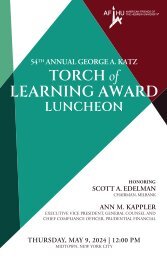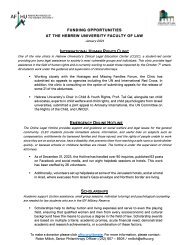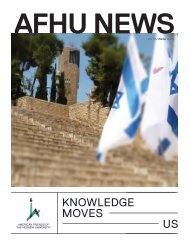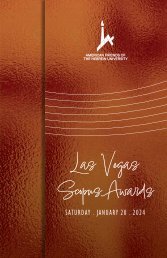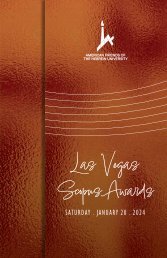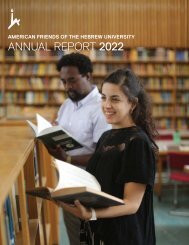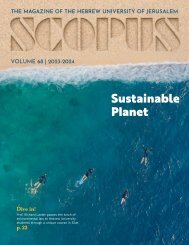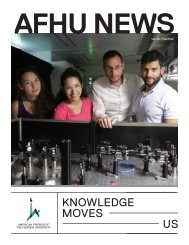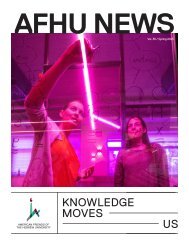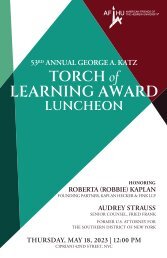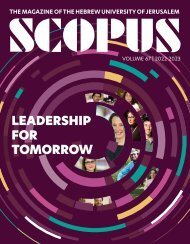Create successful ePaper yourself
Turn your PDF publications into a flip-book with our unique Google optimized e-Paper software.
Archeology<br />
The mining shafts in the Timna Archaeological Park, which houses<br />
the world’s oldest copper mine located in southern Israel, are<br />
stocked with stories of intrigue. Dating back to the turn of the<br />
first millennium BC, various nomadic populations, during the time of<br />
Kings David and Solomon, exploited the mine and left their mark in<br />
the form of elaborate rock engravings near the mining tunnels. The<br />
mine has long offered a treasure trove of information to archeologists,<br />
but a revolutionary technology at the Hebrew University’s Institute of<br />
Archeology is bringing these dramatic images to life and giving new<br />
insights in the lives of these ancient populations.<br />
Researchers in the Institute’s Computerized Archeology Lab are<br />
leading a hi-tech revolution that is transforming the study of ancient<br />
artifacts. Notably, they are developing methods for the analysis of<br />
3D models that are vastly increasing our knowledge of antiquity and<br />
broadening the horizons of archeological research.<br />
Vivid images from Timna, such as those depicted in the rock<br />
engraving, “Chariots” which illustrates Egyptian chariots, groups of<br />
local hunters and a variety of wild animals can now be examined from<br />
the perspective of the carving tools used to create them as well as the<br />
specific techniques and stylistic features of the engraving.<br />
Led by Prof. Leore Grosman, the lab employs advanced scanning<br />
machines and develops precise algorithms and efficient methods for<br />
the documentation and measurement of artifacts and engravings.<br />
These models allow researchers to measure more precisely a host<br />
of important parameters that are crucial to our understanding of the<br />
objects from ancient life.<br />
The analysis of these digital models can determine an object’s<br />
center of mass, volume, average angles, curvature, and even surface<br />
roughness. They are replacing the less reliable manual measurements<br />
that have traditionally been used to analyze artifacts.<br />
TODAY, MOST ARCHEOLOGICAL<br />
CENTERS IN ISRAEL USE THE HEBREW<br />
UNIVERSITY’S TECHNIQUE, AS DO<br />
UNIVERSITIES ACROSS THE GLOBE<br />
2016-<strong>2017</strong> 38



